Geometry & curtain paintings 2004 to 2011

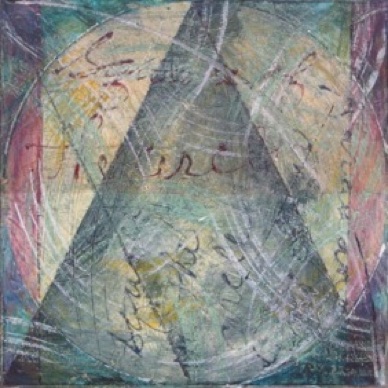
In his 1967 text ‘The Secrets of Ancient Geometry’, Danish author, Tons Brunes revealed hidden mathematical truths found in ancient human creations such as the Egyptian pyramids the Grecian temples and remarkably the proportions of the curtains covering the Jewish Tabernacle described in the book of Exodus.
Each curtain was composed of five strips of cloth, one unit wide and seven units long. When placed in an overlapping form they reveal a method of finding geometric forms in a variety of proportions. These proportional relationships were invaluable to the ancients in designing architectural projects.
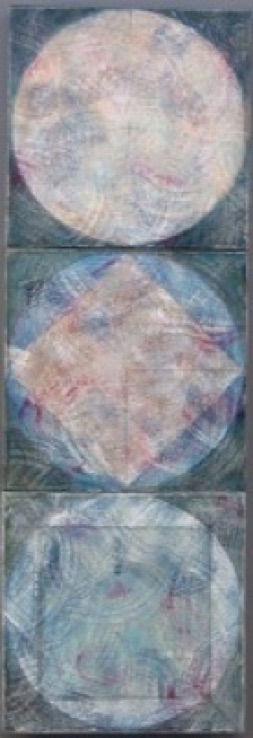
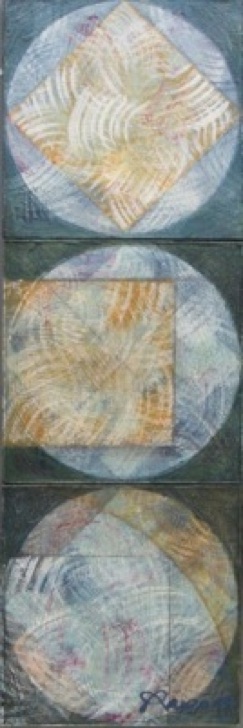
Many of these works draw inspiration from the Archimedes Palimpsest, the oldest surviving manuscript of mathematical thought by the Greek philosopher. A palimpsest is a manuscript in which the original text has been removed to allow another to replace it. Sometimes we lack the needed language or theory for completion of our task. This series of paintings explores some of the relationships found within the tabernacle curtains, as well as the process of problem solving itself.
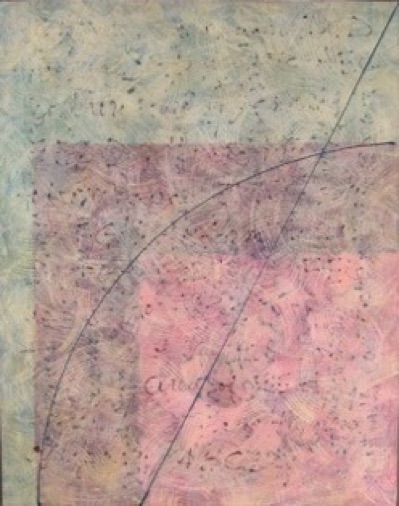
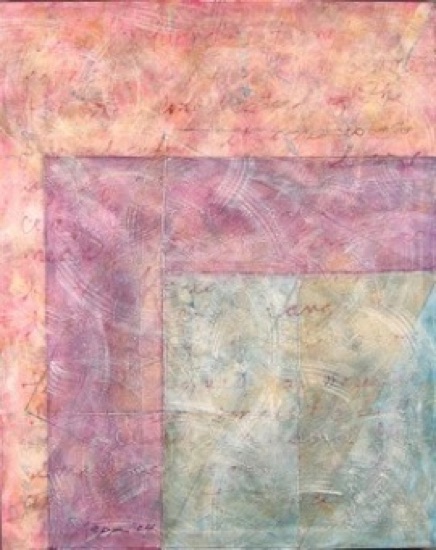
Rosetta 1 2004
Acrylic on Canvas
56” x 44”
Rosetta 2 2004
Acrylic on Canvas
60” x 48”


Triple Curtain 2010
Acrylic on Canvas
60” x 40”
Art comes from a place without words. When trying to fathom relationships between things or the mechanics of how something works, I am sometimes in a meditative state where the words that explain things or even the names of things drop away. I am left with internal forms that can turn, tumble and join and then disappear at the mere thought of a word. Joseph Campbell called this mental state living in eternity, for it is a space without time as well.
In my studio I can work in a space without words and time, in direct connection to the work. Available to me is the tool box of my personal technical abilities and my emotions. Architect, Phillip Johnson once said when asked to describe his experience while viewing the Bilbao, Guggenheim by architect Frank Gehry, that “Art is not about words. It is about tears and joy, tears and joy.”
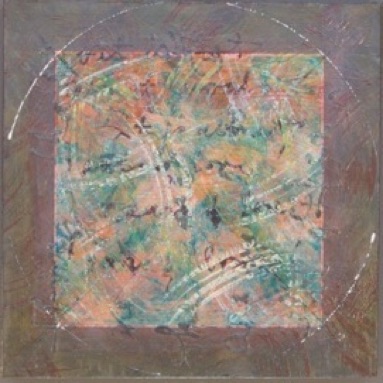
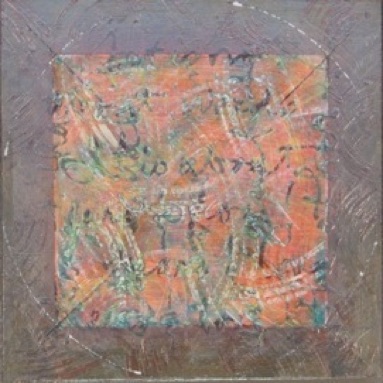
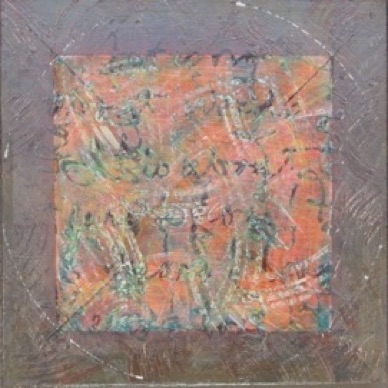
These three play with some of the same mathematical elements of the previous works, but address that mental place where words are lost, where visual noise and even some confusion hinder the acquisition or resolution of an idea. Their perimeters have been rubbed with graphite and give a metallic sheen.
“Square of the Circle, 1,2,3 & 4” Acrylic on Masonite and 16” square. 2014
By removing the two wine colored bands at the left and right, the ancients believed that they were left with a rectangle equal in area to the circle.
Mandala 2010
Acrylic on Masonite
48” x 48” x 1 3/4”
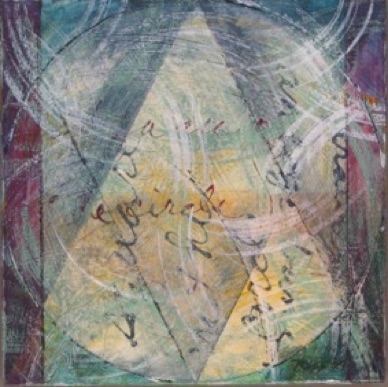
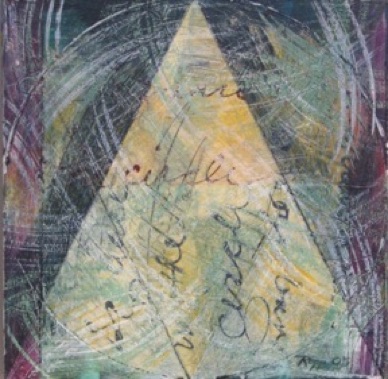
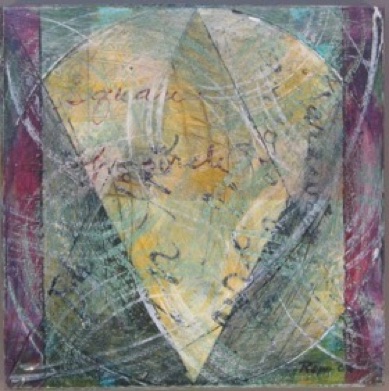

Antiphon 1, 2 & 3 2004
Acrylic on Masonite
21” x 21” x 1 3/4”
These works are also in the form of a palimpsest, with overlapping text referring to the relationships that are contained in the paintings.


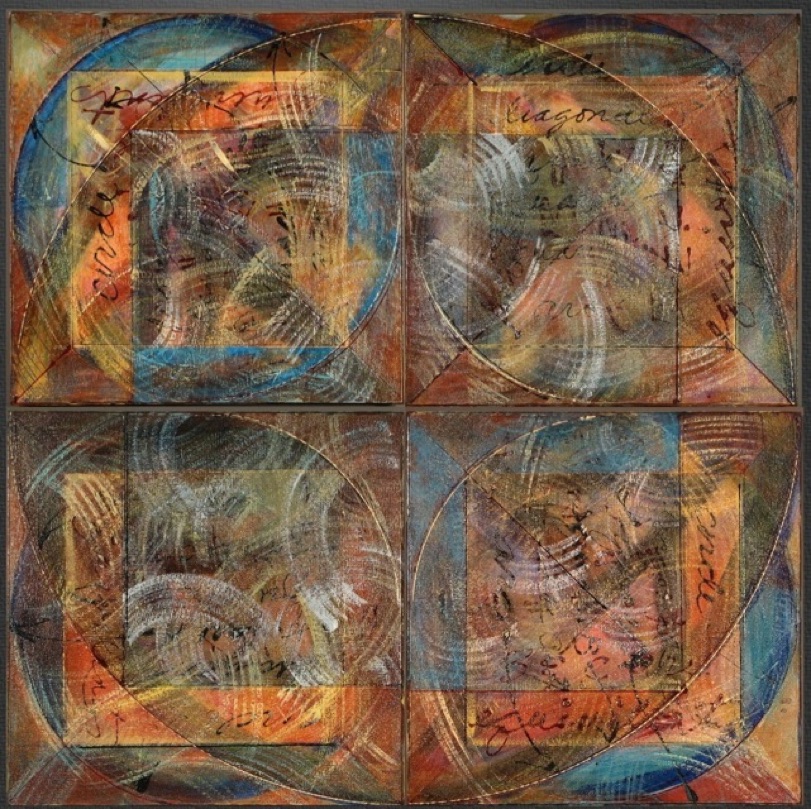
Curtain Corner 2 & 3 2010
Acrylic on Glass Cloth, framed in Mahogany toned wood
23” x 23” x 1 3/4”
The overlapping strips of the Tabernacle Curtain are evident.


Curtain Circle, 2 & 3 2010
Acrylic on Glass Cloth, framed in mahogany toned wood
23” x 23” x 1 3/4”
The smaller square drawn inside the circle is one half the area of the larger square.



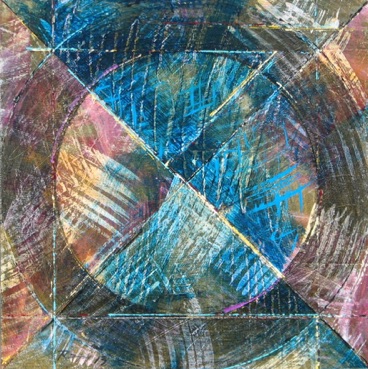
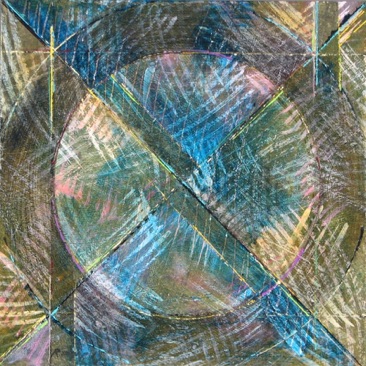

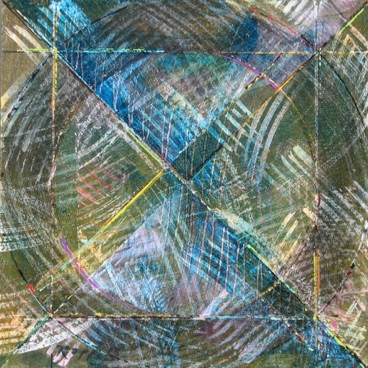
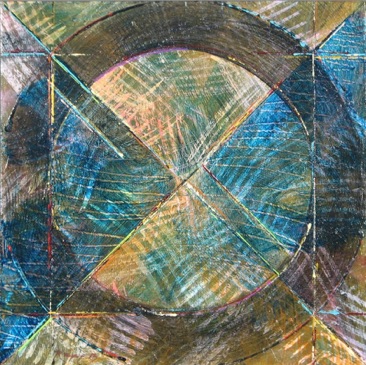

Square the Circle 1 thru 6 2012
16” x 16” x 1 5/8”
Acrylic on Floating Panel
Opposing Vectors 2011
Acrylic on Masonite
16” x 32”
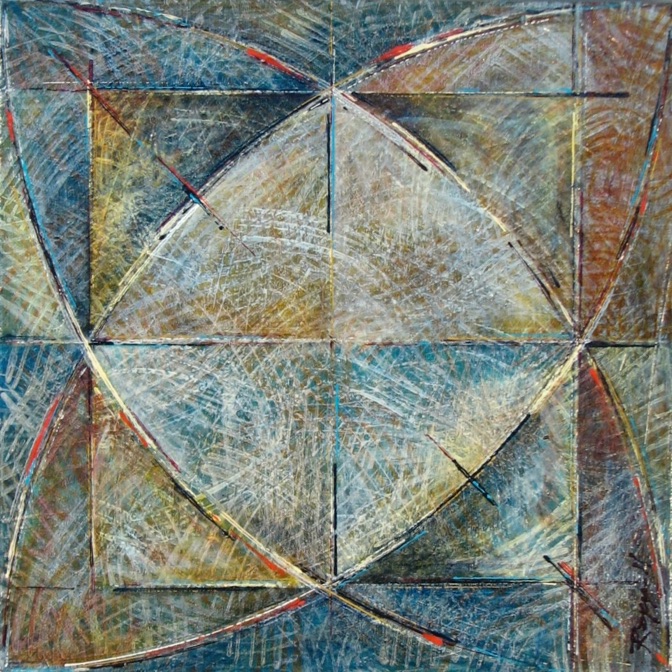
Gestalt Arc 2011
Acrylic on Masonite
23” x 23” x 1 5/8”


Curtain 1 2004
Acrylic on Masonite
32” square
Curtain 2 2004
Acrylic on Masonite
32” square
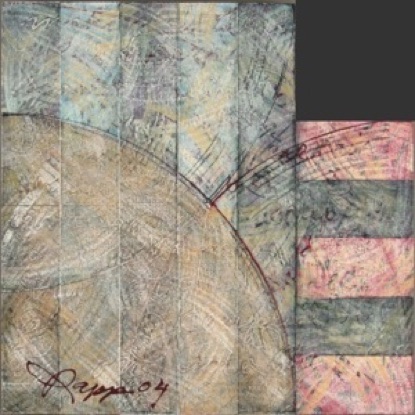
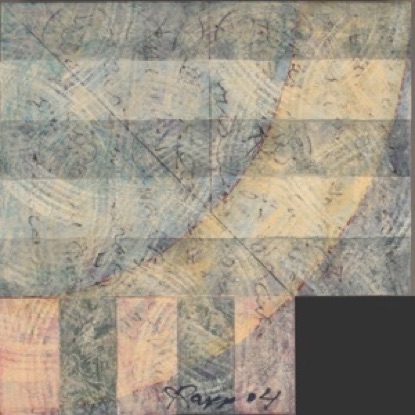
Curtain 3 2004
Acrylic on Masonite
32” square
Curtain 4 2004
Acrylic on Masonite
32” square
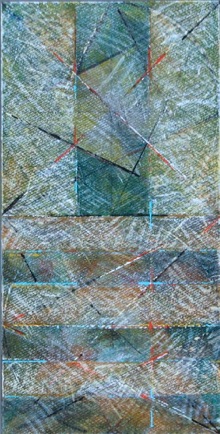
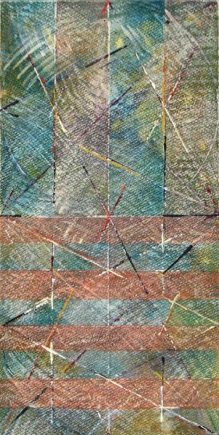
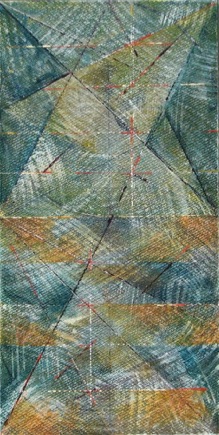
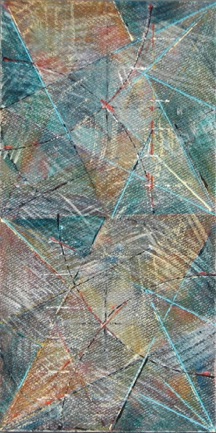
Sacred Star 3, 6 Sacred Star 5 Sacred Star 4, 8 Sacred Star 7
Acrylic on Masonite
36” x 12” x 1 5/8”
2013
Using an eight-pointed star pattern of overlapping triangles, the ancients could easily divide a square in up to nine equal parts.

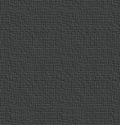
The ‘Square the Circle’ group of 2012 have a gem-like quality.
Foundation 1 2004
Acrylic on Masonite
12” x 36”
Foundation 2 2004
Acrylic on Masonite
12” x 36”
Ten Sheets 2010
Acrylic on Canvas
39 1/2” x 28”
Art is Not About Words 1, 2 & 3 2006
16” square
Acrylic and graphite on Masonite